Originally posted on the Government as a Platform blog.
In my first post I spoke about the Trade Tariff which was the first service to migrate to the PaaS. During the migration we captured lessons learned so we could share them with our GDS colleagues and any other organisations migrating to the PaaS.
Some of these lessons are listed below. It’s worth noting they assume a high degree of technical knowledge.
Prevent downtime by using the blue-green deployment pattern
Deployments by Cloud Foundry by default can cause downtime for your application. To avoid this you need to implement the blue-green deployment pattern.
We used a 3rd party plugin, Autopilot, which worked well. However, Autopilot will cause your application deployments to use double the memory resources (RAM). So make sure you have enough resource quotas in place.
We hit the total memory limits for our application and needed to ask the PaaS team to increase the quota.
Disable process binding for background jobs
We spotted our background processes (Sidekiq) were crashing. This is because Cloud Foundry expects all processes to bind to a port to serve web traffic (or it will stop the process). Only the web servers need to serve traffic – our background processing jobs don’t need to to do this. We fixed this by changing the health check setting cf set-health-check <app name> none.
Don’t be tempted to run your database migrations at startup
It might be tempting to run your database migrations before your application starts. But we advise against this even though it’s a simple way to ensure migrations have run, and Cloud Foundry recommend it if you migrate frequently.
Like most container runtimes, Cloud Foundry can only run one process at a time. Running your database migration will cause a delay until your application boots up. And because Cloud Foundry sends traffic to the instances straight away, some traffic will be dropped on each deployment, particularly if your migrations take a long time to run.
To avoid this problem, setup a duplicate copy of your application that doesn’t serve web traffic but shares the same database connection as the main application. The copy will have the database migration command on startup so you’ll need to disable health checks, for example:
cf push tariff-backend-migrations -c "rake db:migrate"cf set-health-check tariff-backend-migrations none
You can now push code updates to both these applications and run the migrations in the duplicate copy.
To prevent downtime, you’ll still need to ensure your database migrations are compatible with both the old and new versions of the application code.
Importing your data may be tricky
The database is in a secure environment with no direct access, so getting data into it can be tricky. The Trade Tariff database is very large, which slowed down the importing process.
We first uploaded a copy of the database to a cloud file store – Amazon S3. We then downloaded it into an interactive shell running in Cloud Foundry using the 18F cf-ssh tool. We could then import the database via the temporary shell process.
You may be able to import the database with SSH and local port forwarding, however at the time this didn’t work for us.
Plan for production level traffic and test scaling out
For applications that are already live, it’s a good idea to load test your deployment with similar levels of traffic.
The Trade Tariff sits behind the GOV.UK router so we could mirror live production traffic to the new platform before we launched.
You can also do this using a tool like gor for services that aren’t behind the GOV.UK router.
After the launch, the service was hit by a number of unexpected spikes. These were double peak-traffic levels. Normally this might be an issue, but it was simple for us to scale up the web servers to meet the demand using Cloud Foundry. But scaling up the database instance took a bit longer and we needed help from the PaaS team to change our database.
Allowing government digital teams and external agencies to scale databases themselves is on the PaaS team’s backlog.
Wrapping up
In summary the migration went smoothly. We had a few bumps along the way but they were quite easy to resolve and the PaaS team provided great support.
If you’re interested in replicating our continuous deployment pipeline (with database migrations and blue-green deployment on the PaaS), take a look at our deployment scripts for the PaaS. These are open source and can be found in the Trade Tariff GitHub repository.
We look forward to transitioning other services to the PaaS in the future – this will free us up to spend more time focusing on improving services and less time managing hosting.
Do you need help creating or improving a digital service? Contact Matthew, our Technical Director, today on +44 207 125 0160 or drop him a line on [email protected] for a free consultation.










